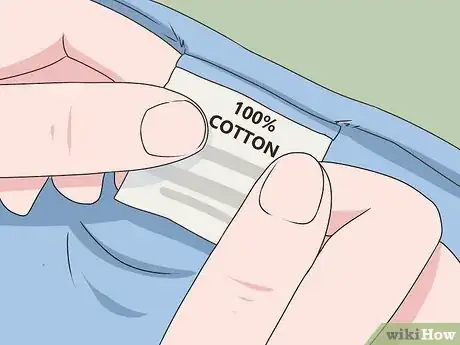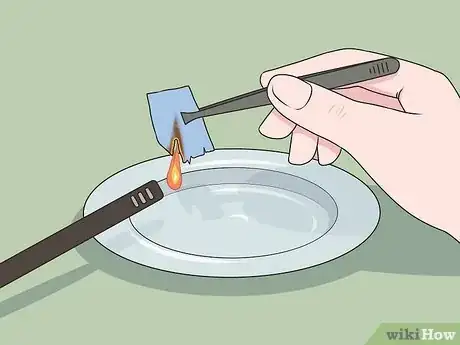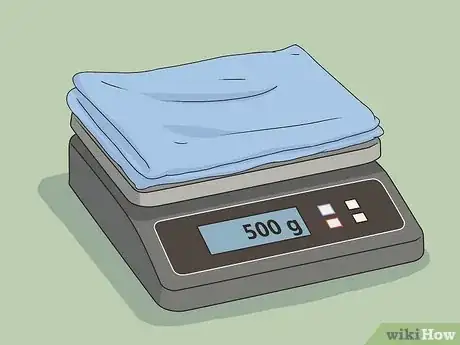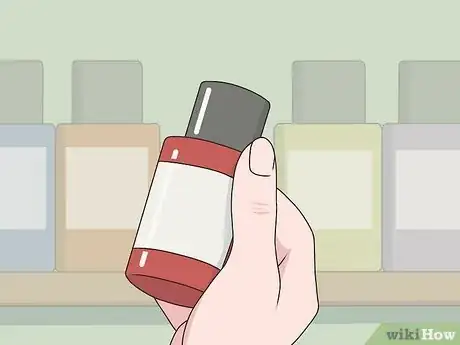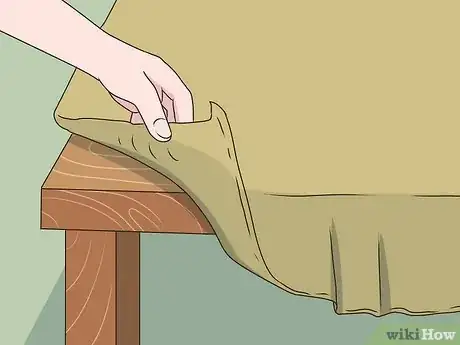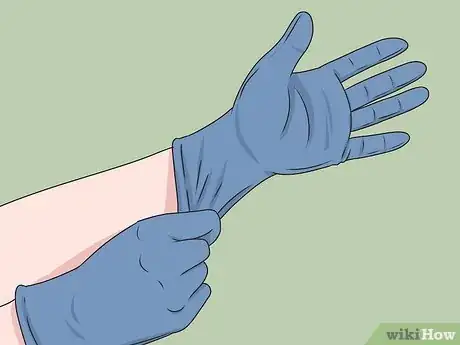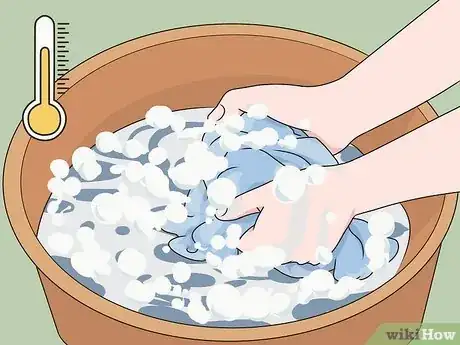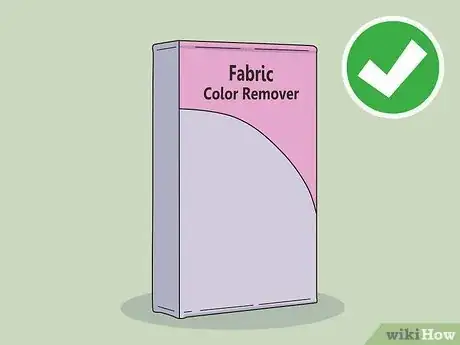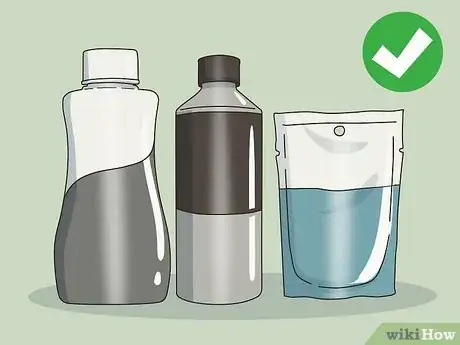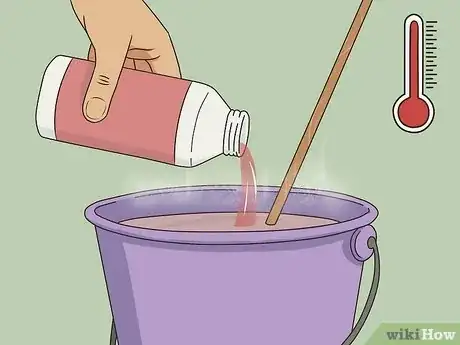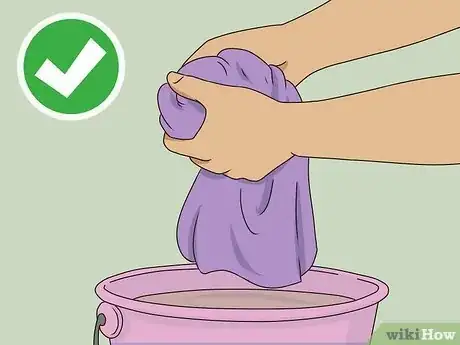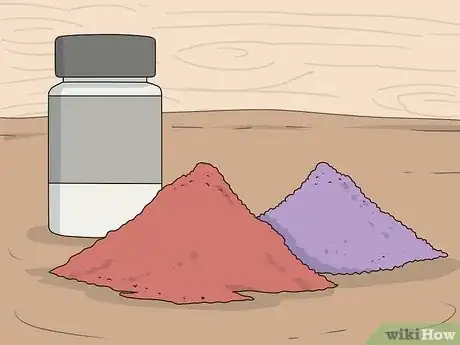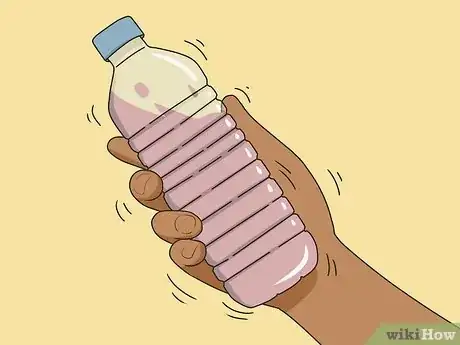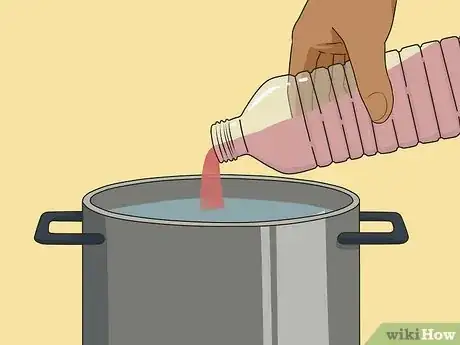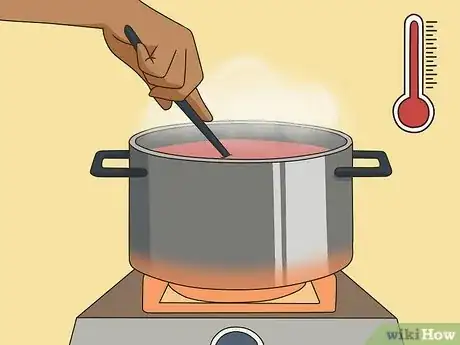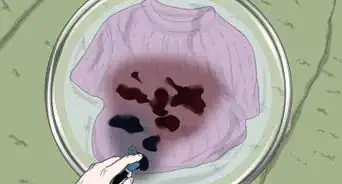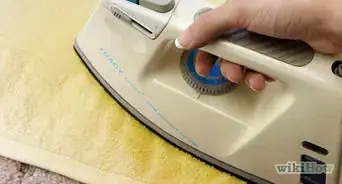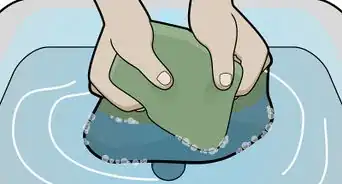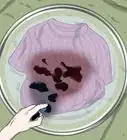This article was co-authored by wikiHow staff writer, Amy Bobinger. Amy Bobinger has been a writer and editor at wikiHow since 2017. She especially enjoys writing articles that help people overcome interpersonal hurdles but frequently covers a variety of subjects, including health and wellness, spirituality, gardening, and more. Amy graduated with a B.A. in English Lit from Mississippi College in 2011 and now lives in her hometown with her husband and two young sons.
There are 9 references cited in this article, which can be found at the bottom of the page.
This article has been viewed 29,583 times.
Learn more...
If you have a satin dress that you’ve already worn to a special event, you might be thinking of dyeing it so you can wear it again. Since satin refers to the way that the fabric is woven, rather than the actual material the dress is made from, you’ll have to determine the makeup of your fabric before you can dye your dress. Luckily, most forms of satin can be dyed once you know what kind of material you’re working with!
Steps
Preparing to Dye Your Dress
-
1Check for a label indicating the material used for your dress. The easiest way to identify what fabric your dress is made from is to check for a care tag or label on the inside of the garment. Satin is usually made from silk, rayon, cotton, polyester, or acetate, but it sometimes may be made from a blend of these fibers.
- If your dress is made from 2 different fibers, choose your dyeing method based on the highest percentage. For instance, if your dress is a blend of 70% cotton and 30% polyester, you would dye it as if it were entirely cotton. However, your results would likely be lighter than if your garment were 100% cotton.
-
2Perform a burn test if there’s no label present. Cut a small piece of fabric from an inner corner or seam on your dress. Place the fabric in a pie plate or similar fireproof container, then place the plate on a fireproof surface, like a concrete sidewalk. Hold the fabric steady with a long pair of tweezers, then hold a flame to the fabric using a long match or fireplace lighter.[1]Advertisement
-
3Weigh the dress to determine how much dye you will need. You will need 1 box of powder dye or 1/2 bottle of liquid dye for every 1 lb (0.45 kg) of fabric.
- You may choose to double this amount if you are trying to achieve a darker color.
-
4Select your desired color. Keep in mind that the original color of your garment will affect its final shade. For instance, if you try to dye a yellow garment with red dye, the result will probably be orange.[4]
- If you want to lighten your dress, you will need to use a commercial color remover before you dye it.
-
5Cover your workspace with a dropcloth or tarp. Dye can be messy, especially if you’re working with powdered dye. Protect the table or countertops where you’ll be working with a non-absorbent covering like a tarp so you don’t permanently stain them.[5]
- You may also want to keep old rags or paper towels nearby in case of spills.
-
6Wear heavy rubber gloves while you dye your dress. Fabric dye can stain your skin, and it may even cause irritation if you have sensitive skin. You’ll also be working with hot water, so it’s important to protect your skin.
-
7
-
8Treat your dress with a color remover if you want to lighten it. Mix the prepared color remover with water, then soak the dress for the amount of time recommended on the packaging.[7]
- You can purchase commercially prepared color remover at the same place you buy your fabric dye.
- Do not attempt to lighten your garment with bleach, as you can permanently damage it.
-
9Smooth out any wrinkles before adding the dress to the dye. If your garment is wrinkled when you add it to your dye, it may not change colors evenly. Spread your dress out flat after you wash it. When you’re ready to add it to the dye, lower it in carefully, but don’t ball it up.
Dyeing a Silk, Cotton, or Rayon Dress
-
1Choose regular fabric dye if your dress is cotton, rayon, or silk. Commercial dyes will take well to these natural fibers, especially if your dress is a light color. You can purchase these dyes at most major retailers.[8]
-
2Fill a bucket with water that has been heated to 180 °F (82 °C) degrees. Your bucket will need to be large enough to hold several gallons of water as well as your dress. You can use a candy thermometer to monitor the temperature if you heat it on the stove, or you can use hot water from your tap.[9]
- Use 3 gallons (11 l) of water for every 1 pound (0.45 kg) of water.
- If you prefer, you can use your washing machine. Adjust the settings to the smallest load and the hottest water.
-
3Stir the dye into the water with a long-handled spoon. The weight of your dress should determine how much dye you need. If you are using liquid dye, shake the container very well before adding the bottle to your tub of hot water.[10]
- If you’re using powdered dye, try dissolving it in a cup or bottle of very hot water, then pour the mixture into the larger bucket.
- To test the color of your dye, dip a piece of paper towel into the dye mixture. Keep in mind that this test will probably be a little darker than the finished product. If the color seems too dark, add more water. If it seems too light, add more dye.
-
4Add 1 cup (240 mL) of salt or vinegar to the hot water. Both salt and vinegar will help the dye to set in the fabric. If you use salt, mix it into a small amount of very hot water until it’s dissolved, then add it to the dye mixture.[11]
- Salt may slightly dull the shine of your satin fabric, so if you want your dress to remain shiny, opt for vinegar.
-
5Lower the dress into the dye and let it soak for 30 minutes, stirring often. Use a long-handled spoon to agitate the water frequently to ensure the color mixes evenly through the fabric.[12]
- If you’re using a washing machine, you can either set it to agitate or you can stir the fabric manually with a spoon.
-
6Remove the dress and check the color after 30 minutes. Lift the dress out of the dye, taking care not to drip the color anywhere except your tarp. If it seems too light, return it to the dye and check it in 5-minute increments until it turns the desired color.[13]
Using Disperse Dye for a Polyester or Acetate Dress
-
1Choose a disperse dye if your dress is polyester or acetate. Synthetic materials like polyester and acetate are extremely difficult to dye. You’ll have to use a special dye called a disperse dye, which must be applied at extremely high temperatures.[14]
- This method is more difficult and dangerous than dyeing natural fibers, so you may want to consider buying a new dress or fabric instead of trying to dye synthetic satin.[15]
-
2Dissolve the desired amount of dye in a small amount of water. Pour the disperse dye into a cup or bottle filled with water, then shake or stir until the dye is fully dissolved.[16]
- The amount of dye you will need will depend on the weight of your dress and the shade you hope to achieve.
- Use 1 bottle of disperse dye to achieve a light shade on a white or light dress.
- Use 2 bottles of disperse dye to get a medium shade on a light-colored dress.
- Use 4 bottles of disperse dye if your dress is already a light-to-medium shade or to get a very dark color.
-
3Add the dissolved dye and dress to a larger pot of water. You will need 3 gallons (11 L) of water for every 1 pound (0.45 kg) of fabric. Since you’ll be heating the water up, it can start out at room temperature.[17]
-
4Heat the mixture to about 160 °F (71 °C) and add the developer. Since synthetic materials are so difficult to dye, they need a special chemical to help them accept the dye. Your disperse dye should come with the developer included in the package.[18]
- The packaging should tell you how much of the developer to add, depending on the weight of your dress.
- This developer has a strong smell, so make sure you do this in a well-ventilated area.
-
5Continue to heat the dye and developer mixture until it boils, stirring often. You should use a long-handled spoon to stir the mixture frequently to ensure that the dye soaks evenly into the fabric of your dress.[19]
-
6Allow the mixture to boil for 20-30 minutes, then remove the dress. If you need to, adjust the temperature on your stove to make sure the mixture continues to boil. Check the dress after 20-30 minutes. If the color appears too light, return it to the mixture and check it in 5 minute increments.[20]
Rinsing and Washing the Garment
-
1Rinse your dress in warm water, then switch to cool. Starting with warm water will help remove excess dye from your garment initially. However, switching to cool water will help the dye to finish setting.[21]
- When the water runs clear, you have rinsed out most of the excess dye.
- If you are dyeing your garment in the washing machine, turn it to a warm-cool cycle.
-
2Hang your dress up to dry. Once you have rinsed the dye, it’s time to dry your dress! Satin is a delicate fabric, so it’s best to let it air dry.
- If you can’t wait for your dress to air dry before you try it on, tumble dry it on low heat.
-
3Run old towels through your washing machine if you used it. If you washed your dress in the washing machine, most of the dye should have rinsed out in the first cycle. To make sure there’s no dye remaining to stain your garments, however, you should run a load of old rags or towels through the wash before you do a regular load of laundry.
Things You'll Need
- Drop cloth or tarp
- Paper towels or old rags
- Heavy rubber gloves
- Long-handled spoon
- Dye
- Color remover if lightening dress
For a Burn Test
- Fireproof pan
- Tweezers
- Long matches or fireplace lighter
Natural Fibers
- Large bucket or washing machine
- Salt or vinegar
Synthetic Fibers
- Large pot
Warnings
- Always perform a burn test in a well-ventilated area or outdoors, and make sure to keep the flame away from your hair or skin.⧼thumbs_response⧽
- If you use disperse dye, make sure you are in a well-ventilated area, and use caution while you are boiling the water.⧼thumbs_response⧽
- Do not attempt to dye fabrics which are labelled as "dry clean only," as you may destroy the garment.[22]⧼thumbs_response⧽
References
- ↑ https://www.craftsy.com/sewing/article/burn-test-for-fiber-content/
- ↑ https://www.craftsy.com/sewing/article/burn-test-for-fiber-content/
- ↑ https://www.craftsy.com/sewing/article/burn-test-for-fiber-content/
- ↑ https://www.craftsy.com/blog/2013/08/dyeing-clothes/
- ↑ https://www.craftsy.com/blog/2013/08/dyeing-clothes/
- ↑ http://www.ssww.com/blog/tricks-and-tips-for-tie-dying/
- ↑ https://www.craftsy.com/blog/2013/08/dyeing-clothes/
- ↑ https://www.craftsy.com/sewing/article/dyeing-clothes/
- ↑ http://www.madeeveryday.com/2008/07/tutorial-easy-fabric-dyeing.html/
- ↑ http://www.madeeveryday.com/2008/07/tutorial-easy-fabric-dyeing.html/
- ↑ http://article.sapub.org/10.5923.j.textile.20170601.02.html
- ↑ http://www.madeeveryday.com/2008/07/tutorial-easy-fabric-dyeing.html/
- ↑ http://www.madeeveryday.com/2008/07/tutorial-easy-fabric-dyeing.html/
- ↑ http://www.pburch.net/dyeing/dispersedye.shtml
- ↑ http://www.pburch.net/dyeing/dispersedye.shtml
- ↑ http://www.aljodye.com/usage_polyester_frames.html
- ↑ http://www.aljodye.com/usage_polyester_frames.html
- ↑ http://www.aljodye.com/usage_polyester_frames.html
- ↑ http://www.aljodye.com/usage_polyester_frames.html
- ↑ http://www.aljodye.com/usage_polyester_frames.html
- ↑ https://www.good.is/articles/do-it-yourself-dye-fabric-the-right-way-30daysofgood
- ↑ http://www.pburch.net/dyeing/dispersedye.shtml
About This Article
If you want to dye a satin dress, first you have to determine what kind of material it's made from. Check the dress for a care tag or label, or perform a burn test on the material if you're still not sure. If your dress is made from cotton, rayon, or silk, you can use a regular fabric dye. If it's polyester or acetate, you will need to use special disperse dye. To learn how to use these different types of dye, keep reading!
